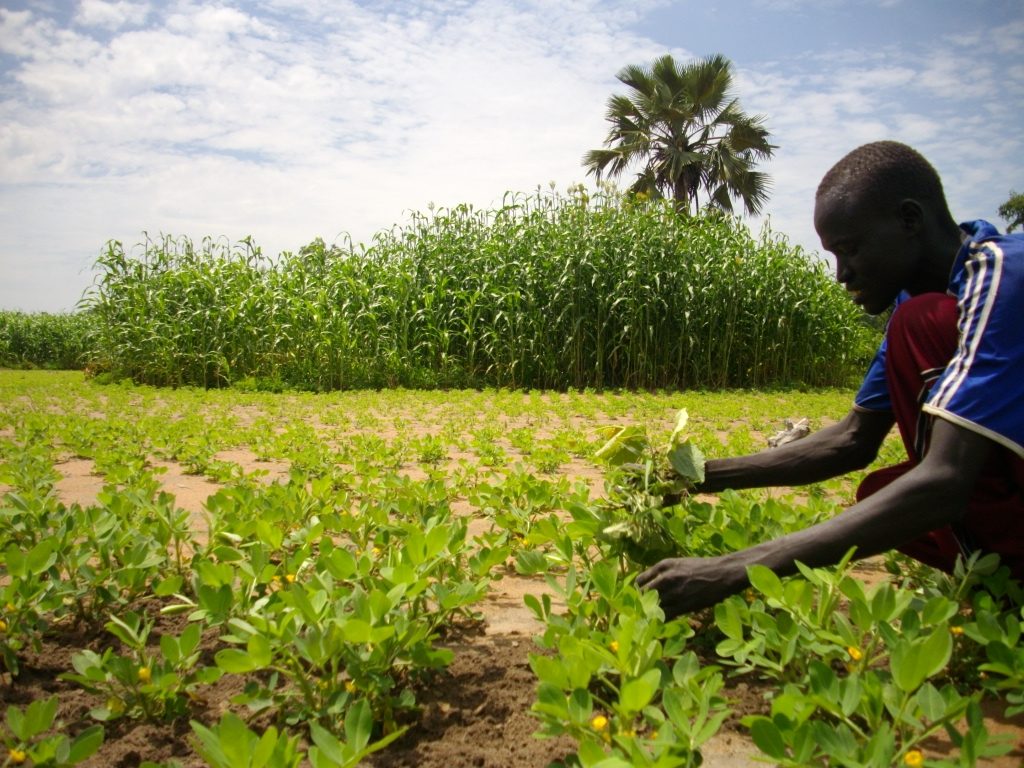The seminar “Zero Hunger in a Changing Climate” was arranged by Sida in cooperation with the Swedish International Agriculture Network Initiative (SIANI) and the Stockholm Environment Institute (SEI).
How to reach Zero Hunger by the year 2030, while increasing sustainable agriculture was the subject of this, the latest in a series of Development Talk at Sida. Answers to this dilemma included an increased focus on small scale farmers and social and gender equity proved to be some of the answers.
An end to hunger, and the realization of food security and improved nutrition as well as support on sustainable agriculture all form part of the ambitious goal number two that most of the countries in the world have agreed upon as one of the 17 Sustainable Development Goals (SDGs). Annika Söder, Vice Minister at the Ministry of Foreign Affairs, agrees that goal number two is ambitious but, in agreement with the invited experts at the seminar, possible to achieve.
There has been some progress made on this goal. Since 1990, the percentage of the worlds population who don’t have enough to eat has gone down from 24 to 14 percent. However, as emphasized by Marie Ottoson at SIDA, a growing middle class has started to eat meat and this increase in global animal husbandry makes up 40% of the carbon footprint of agriculture.
Changing climate also causes serious problems for farmers. The key to a sustainable and nutritionally balanced agriculture in the future is to adapt to these conditions. David Nabarro, Special Adviser on the 2030 Agenda for Sustainable Development stressed that cultivation, distribution, consumption, climate and environmental issues are all interconnected and cannot be viewed separately, which is generally the case at the moment. He continued by saying that governments should not be managing farms. Development has to be managed by farmers together with civil society, with universities and with the industry. He then added that he is more optimistic than ever during his 40 years in the health and development sector: “This is because we now have the Agenda 2030, a manifest that all countries in the world have agreed on.”
What is the situation at the grassroots level?
Small scale farms which are often managed by a family, stand for about 80% of the world’s total food production. Agnes Andersson Djurfeldt, professor at the Department of Human and Economic Geography at Lund University, has been monitoring dynamics of small scale farm development since 2002 in 55 villages in Africa, including Ghana, Kenya and Zambia. The vast majority of farmers have small holdings (around two hectares) where mostly corn or other grains are grown. Most of the harvest goes to their own use, only half of these small farmers sell their produce in quite small amounts.
Over the years, we have seen how the farmers have increased their acreage, but not their yields. The villages that are better off are located close to urban areas and there are some successful growers specializing in “cash-crops” such as cocoa or coffee, says Agnes Andersson Djurfeldt.
The reason why yields have not increased is something Agnes Andersson Djurfeldt and her team have not yet analyzed, but one theory is that it requires labour-based intensification and better and more expensive seeds to increase yields on the existing farmlands.
Cultivation of corn and especially rice, which is increasingly in demand as a staple food in Africa, are pushing aside some traditional cereals such as sorghum. This could be risky given that rice has a negative impact on the environment and that sorghum can tolerate drought better than both rice and corn.
Small-scale farming is the basis of the world’s food supply and 72 percent of these farms are plots of less than one hectare. The question is whether it is sustainable in the long run to increase food supply without compromising sustainable development in low-income countries?
We cannot believe that it is possible to develop communities when women continue to farm plots that are smaller than the size of a living room, says Segenet Kelemu, director general of the Research Institute ICIPE, International Centre of Insect and Ecology in Nairobi.
She says that developing countries must go the same way as the industrialized countries. In Sweden, 80 percent of the population worked in agriculture a hundred and fifty years ago, often on their own small farm. Today, only 1.25 percent of the Swedish population works on farms.
Great need for modern education
At the same time, if farmers are to achieve the required increases in productivity, the level of education needs to rise. As of today, few young people choose to study subjects in agriculture.
Many have grown up seeing their parents work hard on their small fields and do not see agriculture as a career option, rather the opposite. It is an area you do not want to be reminded of, said Bernard Giraud, president of the Livelihoods Venture, a financial facility which operates with a vision to reduce climate impact and increase the quality of life of the farmers in developing countries. That image must change and I would like to see new modern agricultural schools that are able to attract students. There are projects that we can safely invest in.
Segenet Kelemu considers one of the most important means to increase the productivity of farms is to promote greater gender equality. Today, women mostly take care of the simple and monotonous work in the fields. Her estimate is that if the gender gap decreases, 150 million people will be able to get out of poverty. David Nabarro also emphasized that it is not possible to conduct efficient farming without gender equality and without a functioning democracy.
-This is where Sweden and Sida have much to contribute, says Nabarro.
This news story originates from a publication in Swedish by Sida
